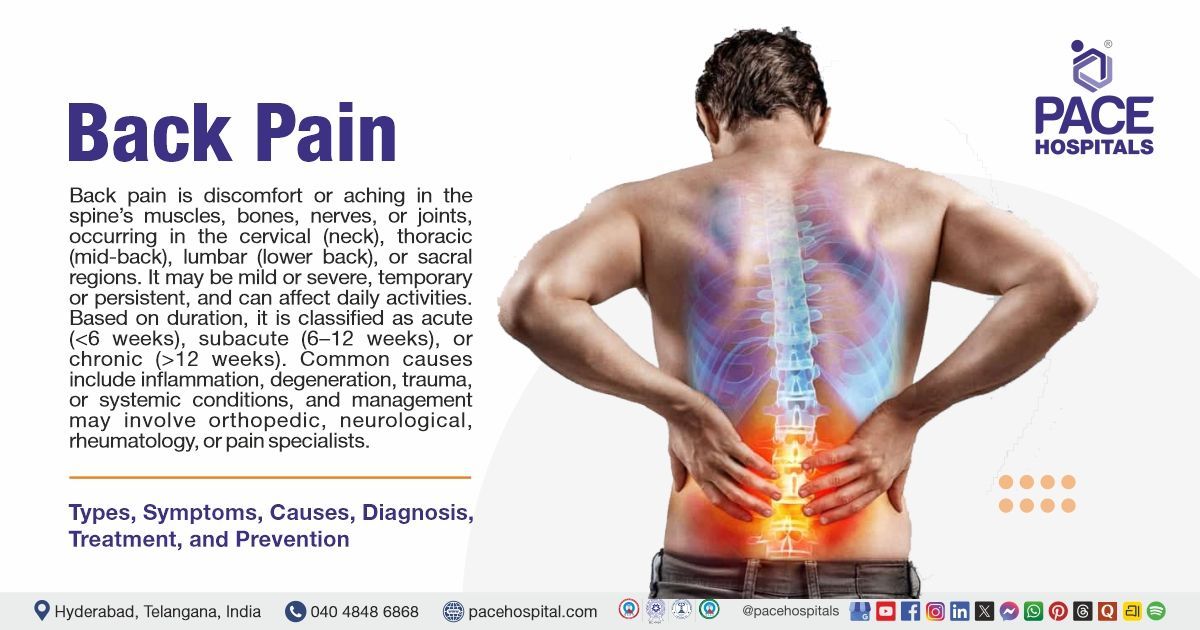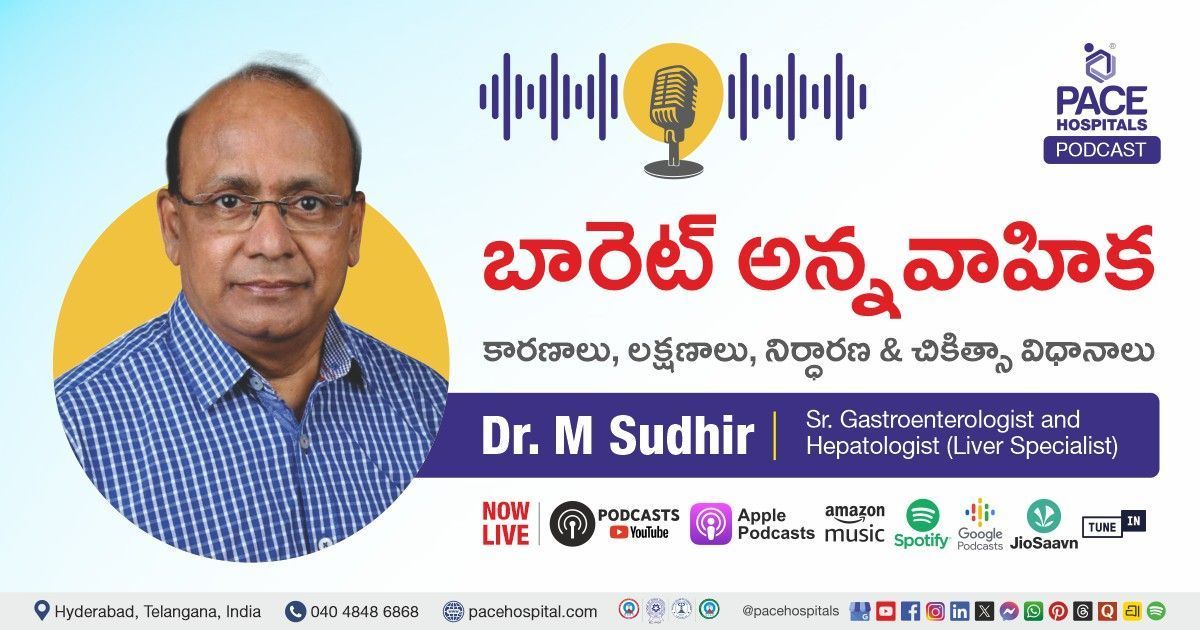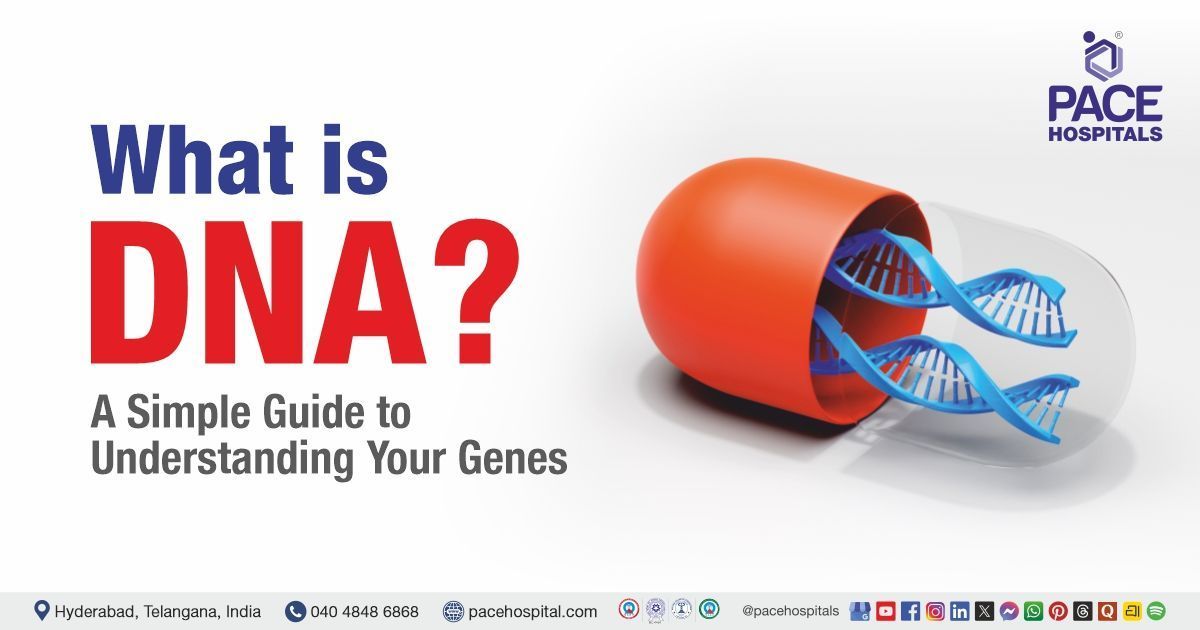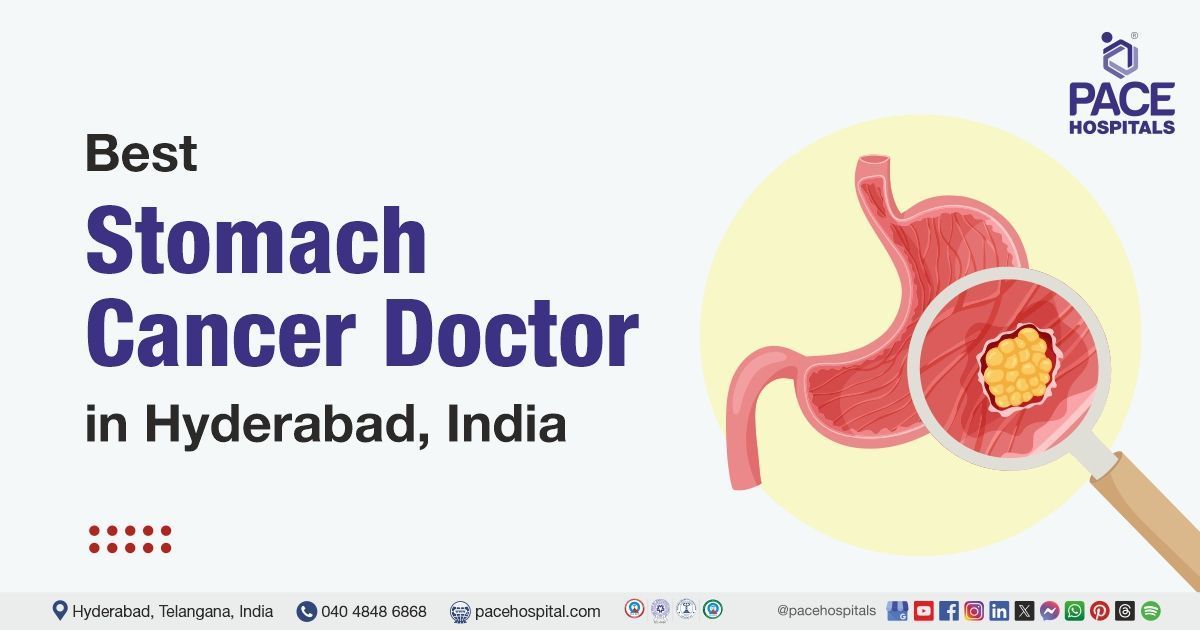Back Pain - Types, Symptoms, Causes, Treatment and Prevention
PACE Hospitals
Written by: Editorial Team
Medically reviewed by: Dr. Raghuram - Orthopaedic Consultant, Trauma, Shoulder and Knee Arthroscopic Surgeon, Hip and Knee Joint Replacement Specialist
Overview | Prevalence | Types | Symptoms | Causes | Risk Factors | Complications | Diagnosis | Treatment | Prevention | Kidney Pain vs Back Pain | FAQs | When to consult a Doctor
Back pain definition
Back pain is defined as discomfort or aching felt in the posterior aspect of the body, usually arising from the muscles, bones, nerves, joints, or other structures of the spine. It may occur anywhere along the vertebral column, including the cervical (neck), thoracic (middle back), lumbar (lower back), and sacral areas.
Pain can be minor or severe, temporary or persistent, and can impair movement and daily functioning. Back pain is divided into three types based on its duration: acute (less than 6 weeks), subacute (6-12 weeks), and chronic.
Inflammation, degeneration, trauma, and other underlying spinal or systemic conditions can all contribute to back pain, which can limit mobility and everyday functioning. Depending on the cause and severity, specialists like
orthopedic surgeons,
neurologists,
rheumatologists, and pain management specialists may be involved in its treatment.
Back pain meaning
"Back pain" is an Old English word, with "back" derived from the Proto-Germanic word bakam, which means the back of the body, and "pain" derived from the Latin word poena, which means punishment or suffering. In medicine, back pain (Latin: dorsalgia) is defined as pain in the back region. This pain can be localised to the cervical, thoracic, lumbar, or sacral regions and is typically caused by musculoskeletal or nerve-related issues.
Prevalence of Back Pain
Prevalence of back pain in the world
Globally, back pain affects a significant portion of the population. In 2020, an estimated 6190 lakhs people worldwide were affected by low back pain (LBP), and this number is projected to rise to about 8430 lakhs by 2050. Age-standardized prevalence rates in some countries, including India, are reported to be approximately 5,134–5,286 cases per 100,000 people.
Prevalence of back pain in India
In India, back pain is also highly prevalent. A meta-analysis found that the point prevalence of low back pain was about 48%, the annual prevalence around 51%, and the lifetime prevalence approximately 66%. A community-based rural study reported that nearly 49% of adults experienced back or neck pain, with non-specific low back pain alone affecting about 45%. Approximately 31.7% of middle-aged and older persons aged 45 and up reported having back pain.
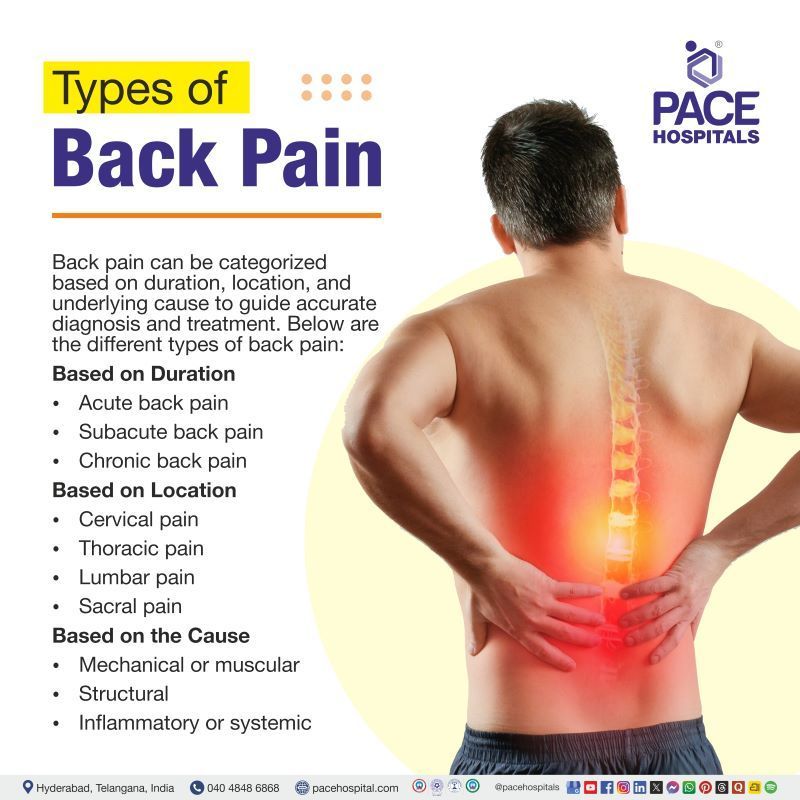
Types of Back Pain
Back pain can be categorized based on duration, location, and underlying cause to guide accurate diagnosis and treatment. Below are the different types of back pain:
- Based on Duration
- Acute back pain
- Subacute back pain
- Chronic back pain
- Based on Location
- Cervical pain
- Thoracic pain
- Lumbar pain
- Sacral pain
- Based on the Cause
- Mechanical or muscular
- Structural
- Inflammatory or systemic
Based on Duration
- Acute back pain: It lasts less than six weeks and is usually caused by a sudden accident, overuse, or muscular strain. This type of pain typically resolves with physical therapy, rest, and mild pain medication and does not suggest a serious condition.
- Subacute back pain: It persists between six and twelve weeks, often due to slower healing of the initial injury or ongoing repetitive stress. It may affect daily function and require targeted treatment.
- Chronic back pain: It lasts more than twelve weeks and may recur episodically. It is often associated with structural or degenerative spine conditions and usually needs long-term management, including lifestyle modification, medications, and sometimes interventions.
Based on Location
- Cervical pain: Neck region pain caused by poor posture, whiplash, cervical spine disorders, or prolonged device use. Stiffness, headaches, and radiating pain to the shoulders and arms are all possible symptoms.
- Thoracic pain: Muscular strain, posture difficulties, and thoracic spine anomalies are common causes of midback pain. It is less prominent than lower back discomfort and can indicate underlying spinal issues.
- Lumbar pain: The most frequent type, affecting the lower back due to weight-bearing stress, heavy lifting, disc problems, or herniation. Symptoms include localized pain, stiffness, and sometimes leg radiation.
- Sacral pain: Near the pelvis and base of the spine, involving the sacroiliac joints or ligaments. Causes include trauma, pregnancy-related changes, structural abnormalities, or inflammation.
Based on the Cause
- Mechanical or muscular: It results from muscle, ligament, or tendon strain or injury supporting the spine. It's the most common and often improves with rest, physical therapy, and ergonomic adjustments.
- Structural: This results from spinal changes like herniated discs, spinal stenosis, spondylolisthesis (vertebral slip), or degenerative disorders. Pain may radiate along nerves, requiring specialized treatment.
- Inflammatory or systemic: It is linked to conditions such as
arthritis, infections, or autoimmune diseases, which can cause inflammation of spinal joints or surrounding tissues. Symptoms may include systemic signs like fever and fatigue.
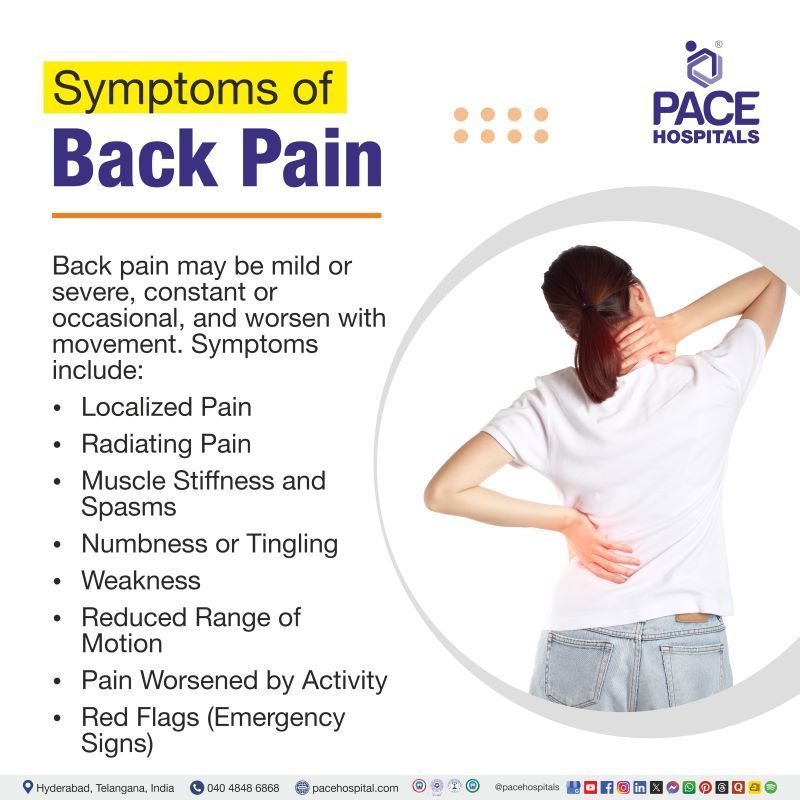
Back Pain Symptoms
Back pain can range from slight, continuous pain to sudden, severe pain, with the pattern and degree determined by the underlying reason. It can be chronic or occasional, worsened by actions. Symptoms of back pain include:
- Localized Pain
- Radiating Pain
- Muscle Stiffness and Spasms
- Numbness or Tingling
- Weakness
- Reduced Range of Motion
- Pain Worsened by Activity
- Red Flags (Emergency Signs)
Localized Pain: Pain is dull, painful, or sharp in the back that increases with movement.
Radiating Pain: Pain that goes from the back down into the buttocks, legs, or feet, often suggesting nerve involvement such as sciatica.
Muscle Stiffness and Spasms: Tightness and involuntary contractions in back muscles that limit mobility and cause discomfort.
Numbness or Tingling: Sensations of pins and needles or loss of feeling, especially in the lower extremities, suggesting nerve compression.
Weakness: Muscle weakness in the legs or feet due to nerve irritation or damage.
Reduced Range of Motion: Difficulty bending, twisting, or moving the back, usually due to pain or stiffness.
Pain Worsened by Activity: Activities such as lifting, bending, or prolonged sitting often worsen symptoms.
Red Flags (Emergency Signs): Severe, and sharp pain; sudden leg weakness; incontinence (involuntary loss of bladder control); numbness in the groin area; unintentional weight loss; and fever may indicate severe underlying conditions necessitating urgent medical attention.
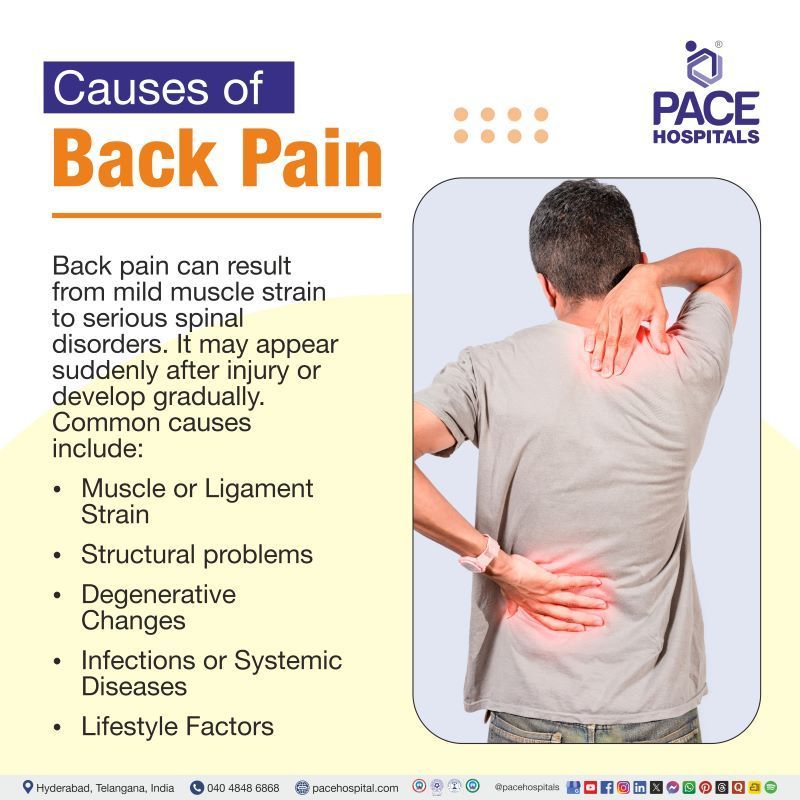
Back Pain Causes
Back pain is generally caused by a range of conditions, from mild muscle strains to serious spinal issues. Sometimes, back pain develops suddenly after an injury, while at other times it develops gradually without a clear trigger. Common back pain reasons include:
- Muscle or Ligament Strain
- Structural problems
- Degenerative Changes
- Infections or Systemic Diseases
- Lifestyle Factors
Muscle or Ligament Strain: Sudden twisting, inappropriately lifting large objects, and repetitive activities can all strain the back muscles and ligaments, causing pain and discomfort.
Structural problems: Herniated discs, spinal narrowing and vertebral slippage can put pressure on nerves, causing pain to spread.
Degenerative Changes: Osteoarthritis and disc degeneration are examples of age-related wear and tear that can make chronic back pain worse by impairing spinal stability and reducing flexibility.
Infections or Systemic Diseases: Infections of the spine or kidneys, as well as inflammatory conditions such as ankylosing spondylitis, can cause localized or radiating back pain.
Lifestyle Factors: Poor posture, a sedentary lifestyle,
obesity, smoking, and jobs involving heavy physical work can increase the risk of developing back pain over time.
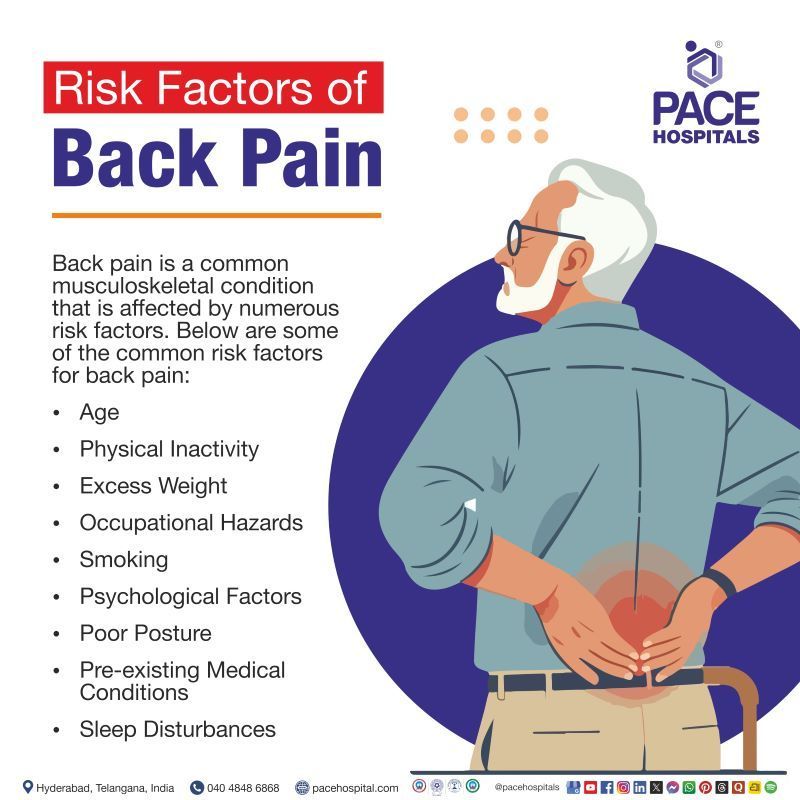
Back Pain Risk Factors
Back pain is a common musculoskeletal condition that is affected by numerous risk factors. Below are some of the common risk factors for back pain:
- Age
- Physical Inactivity
- Excess Weight
- Occupational Hazards
- Smoking
- Psychological Factors
- Poor Posture
- Pre-existing Medical Conditions
- Sleep Disturbances
Age: Because of the natural wear and tear on the spinal structures, the likelihood of developing back pain rises with age, particularly after the ages of 30 to 40.
Physical Inactivity: A lack of exercise weakens the muscles that support the spine, increasing the risk of injury.
Excess Weight: Carrying more weight puts extra stress on the spine and surrounding muscles.
Occupational Hazards: Jobs that involve heavy lifting, repetitive bending or twisting, and prolonged sitting can elevates the risk of developing back pain.
Smoking: It reduces blood flow to the spinal tissues, impairs healing, and contributes to disc degeneration.
Psychological Factors: Stress, anxiety, and depression can increase vulnerability to back pain and exacerbate symptoms.
Poor Posture: Sustained bad posture, especially while sitting or working, can worsen or cause back pain.
Pre-existing Medical Conditions: Arthritis and osteoporosis are two conditions that can increase the risk of developing back discomfort.
Sleep Disturbances: Poor sleep quality and insufficient sleep duration have been associated with an increased risk of back pain.
Back Pain Complications
If left untreated or poorly managed, back pain can lead to several complications that may affect physical, emotional, and occupational well-being. The following are the complications of back pain :
- Mental Health Issues
- Spinal Deformities
- Cauda Equina Syndrome
- Incontinence and Sexual Dysfunction
- Analgesic agents’ dependence
- Disability and reduced quality of life
Mental Health Issues: Chronic (long term) back pain is associated with anxiety, depression, or sleep disturbances resulting from ongoing pain and disability.
Spinal Deformities: Conditions like scoliosis or kyphosis are developing or worsening due to underlying spine issues.
Cauda Equina Syndrome: A serious emergency causing bladder, bowel dysfunction, and leg weakness due to nerve compression.
Incontinence and Sexual Dysfunction: It is caused by a nerve injury that impairs bladder, bowel, and sexual function.
Analgesic agents’ dependence: Risk of substance abuse from prolonged use of pain medications for chronic back pain management.
Disability and reduced quality of life: Social isolation, occupational disability, and functional limitations can all result from chronic back pain.
Back Pain Diagnosis
The goal of diagnosing back pain is to identify its underlying cause, exclude severe conditions, and recommend appropriate treatment. Back pain is evaluated using a systematic approach that considers several essential factors. The following are the steps commonly included in the diagnostic process for back pain:
Medical History: The orthopaedic doctor or neurologist will ask about the onset, duration, and severity of pain, as well as factors that worsen or relieve it. This helps identify possible causes and guide further evaluation.
Physical Examination: A comprehensive physical exam evaluates posture, range of motion, muscle strength, and reflexes. This evaluation aids in identifying abnormalities and determining the etiology of back discomfort.
Imaging: Tests include X-rays, magnetic resonance imaging (MRI) or computed tomography (CT) scans, which are used to examine the bones, discs, and soft tissues of the spine. Imaging can reveal structural problems contributing to back pain.
Other Tests: Additional evaluation, such as blood tests, nerve studies, nerve conduction studies or electromyography (EMG) for nerve function assessment, or urine tests, may be necessary to rule out infections or systemic illnesses that could cause back pain.
Back Pain Treatment
Typically, back pain management consists of a variety of patient-specific therapies. Depending on the type, severity, and underlying cause of back pain, there are various treatment options. Among them available treatments are:
Lifestyle Changes: As prolonged bed rest may worsen back pain, it's essential to maintain an active lifestyle. Muscle strain and inflammation can be lessened by applying heat or cold. To prevent additional strain, it is also essential to maintain proper posture when standing, sitting, and lifting.
Physical Therapy and Exercise: Structured exercises can help strengthen the core and back muscles, improving spinal support. Stretching, posture correction, and ergonomic training can assist in preventing recurrence. Walking, cycling and swimming are all low-impact aerobic activities which improve spinal health.
Medications: Over-the-counter pain medications, like NSAIDs, can help relieve pain and reduce inflammation. Muscle relaxants may be recommended to relieve spasms, while stronger prescription drugs can be used under physician supervision to treat severe or nerve-related discomfort.
Advanced Treatments: Interventions such as epidural steroid injections may help relieve nerve-related pain in cases of persistent or severe pain. Surgical options may be considered when structural issues result in significant pain or neurological deficits.
Why Choose PACE Hospitals?
Expert Super Specialist Doctors
Advanced Diagnostics & Treatment
Affordable & Transparent Care
24x7 Emergency & ICU Support

Back Pain Prevention
Adopting healthy habits can reduce the risk of back pain and prevent its recurrence. Preserving the health of the spine while addressing risk factors through ergonomics, regular exercise, and good posture. Back pain can be avoided by taking the following steps:
- Regular Exercise
- Education and Self-Management
- Maintain Good Posture
- Ergonomic Adjustments
- Weight Management
- Avoid Prolonged Bed Rest
- Psychological Well-being
- Use of Supportive Devices
- Avoidance of Smoking
Regular Exercise: Regular exercise like aerobic activity, strength training, and stretching, can help prevent the back pain by keeping the back muscles strong and flexible.
Education and Self-Management: Learning about proper body mechanics, posture, and ergonomics, combaining with practising self-management techniques, plays a vital role in preventing episodes of back pain.
Maintain Good Posture: Maintaining proper posture during daily activities like standing, sitting, and lifting, helps to alleviate strain on the back muscles and spine.
Ergonomic Adjustments: Back pain can be reduced by implementing ergonomic changes at home and at work, such as employing supporting desks, adjustable seats, and good posture.
Weight Management: Maintaining a healthy body mass index (BMI) reduces pressure on the lumbar spine and lowers the risk of back pain.
Avoid Prolonged Bed Rest: Early movement and avoidance of prolonged bed rest help maintain muscle function and prevent the chronic development of back pain.
Psychological Well-being: Practicing mindfulness, relaxation techniques, and cognitive-behavioral strategies to manage stress and support mental well-being can play an essential role in preventing chronic (long term) back pain.
Use of Supportive Devices: Wearing proper, supportive footwear and using assistive devices when needed can reduce strain on the back during daily activities.
Avoidance of Smoking: Smoking cessation is strongly advised, as smoking is associated with reduced blood flow to spinal tissues and an increased risk of back pain.
Difference Between Kidney Pain and Back Pain
Kidney pain vs back pain
The location, type, and symptoms of kidney pain are different from those of musculoskeletal back pain. Below are some of the parameters that help in differentiating kidney pain and back pain:
| Feature | Kidney Pain | Back Pain (Musculoskeletal) |
|---|---|---|
| Location | Felt deep in the flank, just below the ribs on one or both sides; may radiate to the lower abdomen, groin, or inner thigh. | Fever, chills, nausea, vomiting, urinary symptoms (burning, urgency, blood in urine). |
| Nature of Pain | Dull, constant ache (infection) or sharp, severe pain (stones). | Aching, stiffness, or sharp pain that worsens with movement or posture. |
| Triggers | Not affected by movement; may worsen with urination or when pressing the flank. | Worsens with bending, lifting, twisting, or prolonged sitting/standing. |
| Associated Symptoms | Fever, chills, nausea, vomiting, urinary symptoms (burning, urgency, blood in urine). | Usually, no urinary symptoms; may have muscle spasms or limited motion. |
| Duration | Persists until the underlying kidney issue is treated. | Often improves with rest, stretching, or physical therapy. |
| Response to Pressure | Pain is deeper and not relieved by back massage or position change. | Pain may ease with rest or massage; affected muscles may feel tender. |
Frequently Asked Questions (FAQs) on Back Pain
What are the causes of back pain in females?
Muscle strain, menstrual cycle diseases (PMS, endometriosis, and dysmenorrhea), pregnancy, osteoporosis, and anatomical variables such as pelvic anatomy are among the most common causes of back pain in females.
How to reduce back pain?
Maintain proper posture, exercise regularly, use heat or cold therapy, and take over-the-counter pain relievers as needed to reduce back discomfort.
How to get rid of back pain instantly?
Immediate relief techniques include gentle stretching, hot or cold packs, over-the-counter pain relief, and adjusting posture or position; these offer temporary relief but are not always curative.
Can gas cause back pain?
Severe gas can produce abdominal pain that sometimes radiates to the back, though the pain is typically due to abdominal distension rather than direct back involvement.
Do kidney stones cause back pain?
Kidney stones can cause severe radiating back or flank pain, typically accompanied by urinary symptoms; this often requires medical attention.
How to relieve back pain fast at home?
Quick home remedies include rest, gentle stretches, applying heat or ice, massage, and avoiding activities that worsen pain.
Why does back pain occur?
Muscle or ligament strains may cause back pain, herniated discs, arthritis, injuries, postural problems, and organ-related issues in the abdomen or pelvis.
How to relieve back pain during pregnancy while sleeping?
Use a pregnancy pillow or place a pillow between the knees, sleep on the side, and maintain proper spinal alignment for the best relief during pregnancy.
Which doctor to consult for back pain?
Consult a primary care physician initially; referrals to specialists, such as orthopedists, neurologists, rheumatologists, or pain management experts, may be made as needed.
Is back pain a symptom of coronavirus?
Back pain is not a classic symptom of COVID-19, but it can occur due to body aches or musculoskeletal strain during infection, so clinical context matters.
How to reduce back pain during periods?
Apply heat, practice gentle exercises, maintain good posture, and take nonsteroidal anti-inflammatory drugs if needed for period-related back pain.
Can acidity cause back pain?
Severe acidity or gastrointestinal problems may indirectly cause pain that radiates to the back, but this is less common than abdominal pain.
Is physiotherapy good for back pain?
Physiotherapy is effective for many forms of back pain, providing exercises and manual techniques to improve strength, flexibility, and pain control.
How to control back pain?
Control back pain with a combination of correct posture, regular exercise, ergonomic modifications, weight management, and medical or physiotherapy guidance.
When to Consult a Doctor for Back Pain?
Consult an orthopedic doctor for back pain if the pain persists for several days, worsens over time, or interferes with everyday activities. Signs that need attention include:
- Pain that radiates down the legs
- Numbness, tingling, or weakness in the legs
- Loss of bladder or bowel control
- Fever or unexplained weight loss
- Pain following an injury or fall
If these symptoms persist, it is important to consult a
back pain specialist who can evaluate the cause and recommend the proper treatment plan. Seek immediate medical attention if you experience severe trauma, sudden weakness, or inability to move, which could indicate a serious condition. A general care physician, orthopedist, or neurologist can provide the best back pain treatment and prevent complications.
Share on
Request an appointment
Fill in the appointment form or call us instantly to book a confirmed appointment with our super specialist at 04048486868

